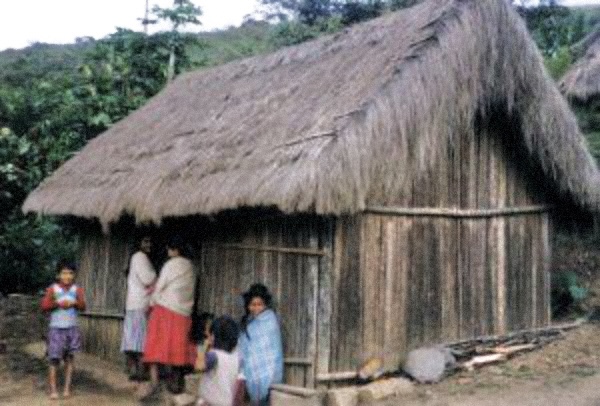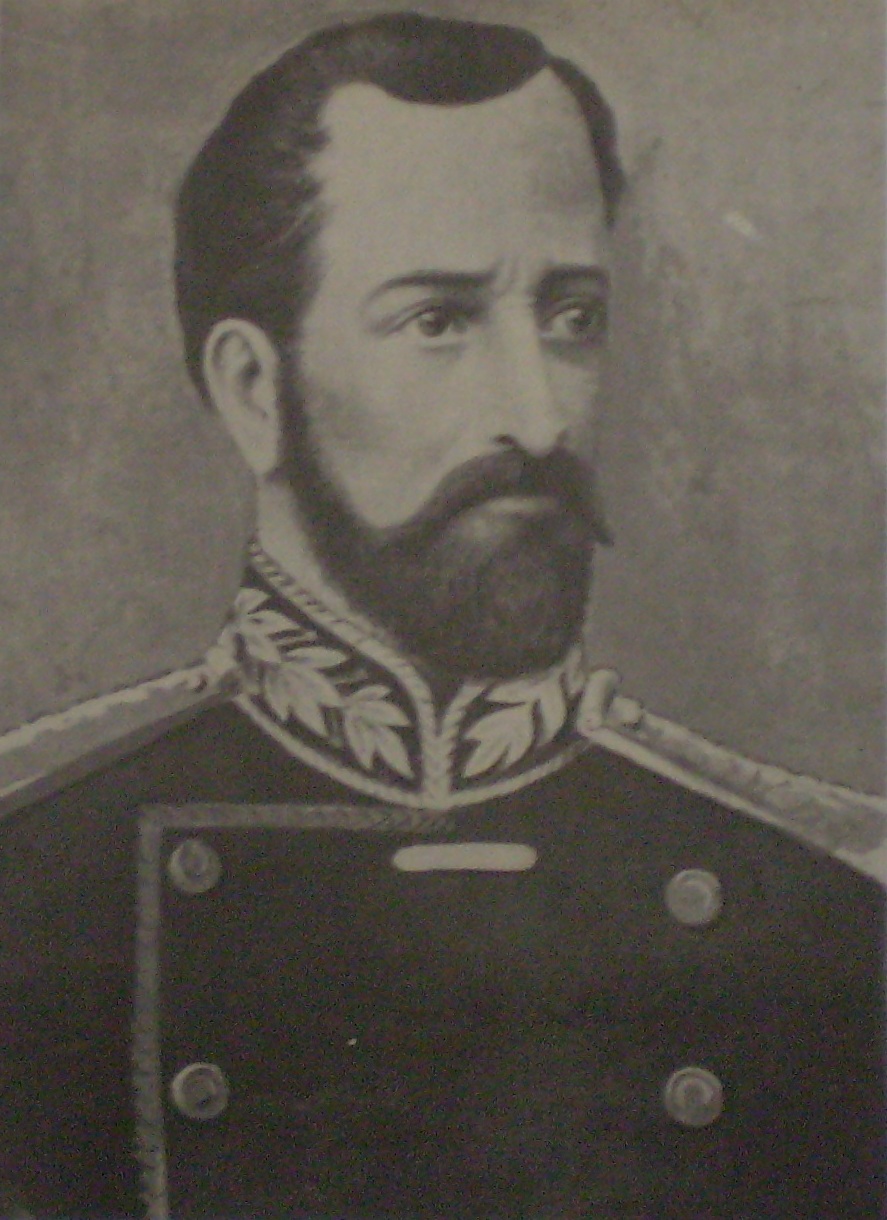|
Pahuichi
''Pahuichi'', sometimes spelled ''pagüichi'', is a term of uncertain origin used in the Spanish of Bolivia and northern Argentina to refer to a rustic domiciliary structure with a roof made of straw or dried palm fronds. History of use The principal Spanish dictionary of the Real Academia Española (RAE) lists ''pahuichi'' as a Bolivianism synoymous with the more widely used ''bohío "''hut, simple rustic dwelling," without giving any indication as to the former's etymology. The RAE's dictionary of Americanisms offers slightly more detail, defining ''pahuichi'' as a "small house or cottage thatched with leaves (or blades of grass)" and noting the word's use in northern Argentina as well as in Bolivia, but again offers no hypothesis as to the word's origins. Eastern Bolivian folklorist and philologist Germán Coimbra Sanz hypothesizes that the word represents a borrowing from an unidentified indigenous language of the Chaco and notes its occurrence in newspapers and journal ar ... [...More Info...] [...Related Items...] OR: [Wikipedia] [Google] [Baidu] |
Quechuas De Tuichi
Quechua people (, ; ) , Quichua people or Kichwa people may refer to any of the Indigenous peoples of South America who speak the Quechua languages, which originated among the Indigenous people of Peru. Although most Quechua speakers are native to Peru, there are some significant populations in Ecuador, Bolivia, Chile, Colombia, and Argentina. The most common Quechua dialect is Southern Quechua. The Kichwa people of Ecuador speak the Kichwa dialect; in Colombia, the Inga people speak Inga Kichwa. The Quechua word for a Quechua speaker is ''runa'' or ''nuna'' ("person"); the plural is ''runakuna'' or ''nunakuna'' ("people"). "Quechua speakers call themselves Runa -- simply translated, "the people". Some historical Quechua people are: * The Chanka people lived in the Huancavelica, Ayacucho, and Apurímac regions of Peru. * The Huanca people of the Junín Region of Peru spoke Quechua before the Incas did. * The Inca established the largest empire of the pre-Columbian era. * Th ... [...More Info...] [...Related Items...] OR: [Wikipedia] [Google] [Baidu] |
Royal Spanish Academy
The Royal Spanish Academy (, ; ) is Spain's official royal institution with a mission to ensure the stability of the Spanish language. It is based in Madrid, Spain, and is affiliated with national language academies in 22 other Hispanophone nations through the Association of Spanish Language Academies, Association of Academies of the Spanish Language. The RAE dedicates itself to language planning by applying linguistic prescription aimed at promoting linguistic unity within and between various territories, to ensure a common standard. The proposed language guidelines are shown in a number of works. History In 1711, Spain, unlike France, Italy and Portugal, did not have a large dictionary with a comprehensive and collegially elaborated lexicographical repertoire. The initial nucleus of the future Academy was formed that same year by the eight novatores who met in the library of the palace of , Duke of Escalona and Marquisate of Villena, Marquess of Villena, located in the ... [...More Info...] [...Related Items...] OR: [Wikipedia] [Google] [Baidu] |
Germán Coimbra Sanz
Germán () is a male given name in Spanish speaking countries. It is a cognate to French Germain (name), Germain, and is a variant of Latin Germanus (other), Germanus. Surname * Domingo Germán (born 1992), baseball player * Esteban Germán (born 1978), Dominican professional baseball second baseman * Franklyn Germán, relief pitcher *Javier Germán (born 1971), Spanish footballer * Tamás Germán, Hungarian professional footballer Given name Art and music * Germán Casas, Chilean singer * Germán Cueto, Mexican painter * Germán Gedovius, Mexican painter * Germán Pedro Ibáñez, Cuban musical director * Germán Legarreta, Puerto Rican actor * Germán Londoño, Colombian painter and sculptor * Germán Magariños, Argentine film director and screenwriter * Germán Robles, Mexican actor * Germán Valdés, Mexican actor, singer, and comedian * Germán Villar, Spanish tenor Humanities and social sciences *Germán Arciniegas, Colombian essayist *Germán Carrera Dam ... [...More Info...] [...Related Items...] OR: [Wikipedia] [Google] [Baidu] |
Santa Cruz De La Sierra
Santa Cruz de la Sierra (; ), commonly known as Santa Cruz, is the largest city in Bolivia and the capital of the Santa Cruz Department (Bolivia), Santa Cruz department. Situated on the Pirai River (Bolivia), Pirai River in the eastern Tropical Lowlands of Bolivia, the Santa Cruz de la Sierra Metropolitan Region is the most populous urban agglomeration in Bolivia with an estimated population of 2.4 million in 2020. It is formed out of a conurbation of seven Santa Cruz municipalities: Santa Cruz de la Sierra, La Guardia, Bolivia, La Guardia, Warnes, Bolivia, Warnes, Cotoca, El Torno, Santa Cruz, El Torno, Porongo, and Montero, Bolivia, Montero. The city was first founded in 1561 by Spanish explorer Ñuflo de Chavez about east of its current location, and was moved several times until it was finally established on the Piray River, Pirai River in the late 16th century. For much of its history, Santa Cruz was mostly a small outpost town, and even after Bolivia gained its independenc ... [...More Info...] [...Related Items...] OR: [Wikipedia] [Google] [Baidu] |
Thatched Buildings
Thatching is the craft of building a roof with dry vegetation such as straw, Phragmites, water reed, Cyperaceae, sedge (''Cladium mariscus''), Juncus, rushes, Calluna, heather, or palm branches, layering the vegetation so as to shed water away from the inner roof. Since the bulk of the vegetation stays dry and is densely packed—trapping air—thatching also functions as roof insulation, insulation. It is a very old roofing method and has been used in both tropical and temperate climates. Thatch is still employed by builders in developing countries, usually with low-cost local vegetation. By contrast, in some developed countries it is the choice of some affluent people who desire a rustic look for their home, would like a more ecologically friendly roof, or who have purchased an originally thatched abode. History Thatching methods have traditionally been passed down from generation to generation and numerous descriptions of the materials and methods used in Europe over the past ... [...More Info...] [...Related Items...] OR: [Wikipedia] [Google] [Baidu] |



